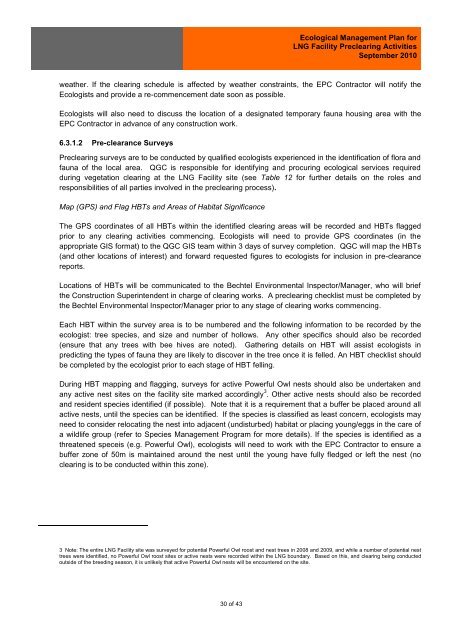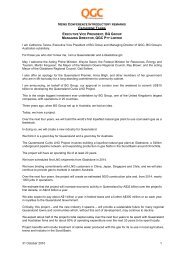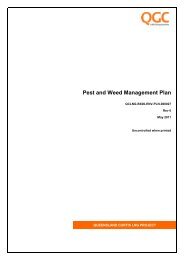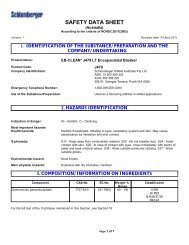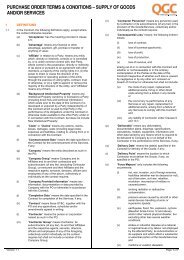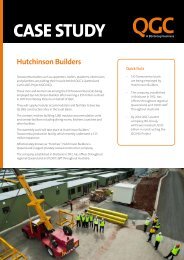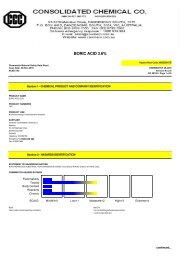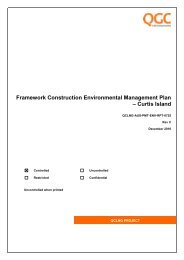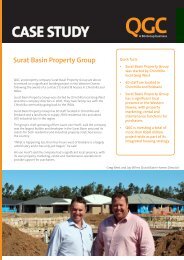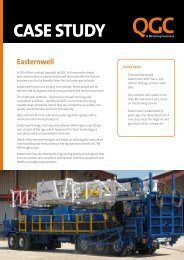Ecological Management Plan for LNG Facility Preclearing ... - QGC
Ecological Management Plan for LNG Facility Preclearing ... - QGC
Ecological Management Plan for LNG Facility Preclearing ... - QGC
You also want an ePaper? Increase the reach of your titles
YUMPU automatically turns print PDFs into web optimized ePapers that Google loves.
<strong>Ecological</strong> <strong>Management</strong> <strong>Plan</strong> <strong>for</strong><br />
<strong>LNG</strong> <strong>Facility</strong> <strong>Preclearing</strong> Activities<br />
September 2010<br />
weather. If the clearing schedule is affected by weather constraints, the EPC Contractor will notify the<br />
Ecologists and provide a re-commencement date soon as possible.<br />
Ecologists will also need to discuss the location of a designated temporary fauna housing area with the<br />
EPC Contractor in advance of any construction work.<br />
6.3.1.2 Pre-clearance Surveys<br />
<strong>Preclearing</strong> surveys are to be conducted by qualified ecologists experienced in the identification of flora and<br />
fauna of the local area. <strong>QGC</strong> is responsible <strong>for</strong> identifying and procuring ecological services required<br />
during vegetation clearing at the <strong>LNG</strong> <strong>Facility</strong> site (see Table 12 <strong>for</strong> further details on the roles and<br />
responsibilities of all parties involved in the preclearing process).<br />
Map (GPS) and Flag HBTs and Areas of Habitat Significance<br />
The GPS coordinates of all HBTs within the identified clearing areas will be recorded and HBTs flagged<br />
prior to any clearing activities commencing. Ecologists will need to provide GPS coordinates (in the<br />
appropriate GIS <strong>for</strong>mat) to the <strong>QGC</strong> GIS team within 3 days of survey completion. <strong>QGC</strong> will map the HBTs<br />
(and other locations of interest) and <strong>for</strong>ward requested figures to ecologists <strong>for</strong> inclusion in pre-clearance<br />
reports.<br />
Locations of HBTs will be communicated to the Bechtel Environmental Inspector/Manager, who will brief<br />
the Construction Superintendent in charge of clearing works. A preclearing checklist must be completed by<br />
the Bechtel Environmental Inspector/Manager prior to any stage of clearing works commencing.<br />
Each HBT within the survey area is to be numbered and the following in<strong>for</strong>mation to be recorded by the<br />
ecologist: tree species, and size and number of hollows. Any other specifics should also be recorded<br />
(ensure that any trees with bee hives are noted). Gathering details on HBT will assist ecologists in<br />
predicting the types of fauna they are likely to discover in the tree once it is felled. An HBT checklist should<br />
be completed by the ecologist prior to each stage of HBT felling.<br />
During HBT mapping and flagging, surveys <strong>for</strong> active Powerful Owl nests should also be undertaken and<br />
any active nest sites on the facility site marked accordingly 3 . Other active nests should also be recorded<br />
and resident species identified (if possible). Note that it is a requirement that a buffer be placed around all<br />
active nests, until the species can be identified. If the species is classified as least concern, ecologists may<br />
need to consider relocating the nest into adjacent (undisturbed) habitat or placing young/eggs in the care of<br />
a wildlife group (refer to Species <strong>Management</strong> Program <strong>for</strong> more details). If the species is identified as a<br />
threatened speceis (e.g. Powerful Owl), ecologists will need to work with the EPC Contractor to ensure a<br />
buffer zone of 50m is maintained around the nest until the young have fully fledged or left the nest (no<br />
clearing is to be conducted within this zone).<br />
3 Note: The entire <strong>LNG</strong> <strong>Facility</strong> site was surveyed <strong>for</strong> potential Powerful Owl roost and nest trees in 2008 and 2009, and while a number of potential nest<br />
trees were identified, no Powerful Owl roost sites or active nests were recorded within the <strong>LNG</strong> boundary. Based on this, and clearing being conducted<br />
outside of the breeding season, it is unlikely that active Powerful Owl nests will be encountered on the site.<br />
30 of 43


